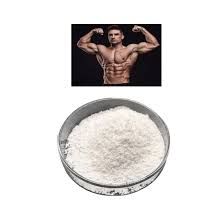
- +86-13363869198
- weimiaohb@126.com

Aug . 11, 2024 05:06 Back to list
The Role of Alkenes as Key Intermediates in Organic Compound Synthesis Processes
Alkenes Versatile Intermediates in Organic Synthesis
Alkenes, characterized by their carbon-carbon double bonds, play a pivotal role in organic chemistry as versatile intermediates in the synthesis of a wide array of organic compounds. Their unique reactivity allows chemists to manipulate their structures and functionalities to create more complex molecules, making them integral to both academic research and industrial applications.
One of the primary reasons alkenes are so valuable in synthesis is their ability to undergo various reactions that can introduce different functional groups or change the connectivity of carbon atoms. For instance, alkenes are readily subjected to electrophilic addition reactions. The double bond acts as a nucleophile, reacting with electrophiles such as hydrogen halides, sulfuric acid, or halogens. This characteristic makes them essential starting materials in the synthesis of alcohols, haloalkanes, and amines. For example, the addition of water to an alkene in the presence of an acid (a reaction known as hydration) typically yields an alcohol, which is a fundamental building block in organic synthesis.
Moreover, alkenes can also undergo polymerization, which is a significant transformation that allows for the production of polymers such as polyethylene and polystyrene. Here, small alkene monomers combine to form long-chain molecules, and this process is not only crucial for industrial applications but also provides insights into reaction mechanisms and polymer chemistry.
In addition to their reactivity in addition reactions, alkenes can be transformed through oxidation and reduction processes. For example, the oxidation of alkenes can lead to the formation of diols, carbonyl compounds, or even carboxylic acids, depending on the reagents and conditions used. Reagents such as potassium permanganate (KMnO4) and ozone (O3) can selectively oxidize alkenes to yield products that are essential for further chemical transformations. On the other hand, hydrogenation reactions can be utilized to convert alkenes into alkanes, showcasing their utility in modifying the degree of unsaturation in organic molecules.
alkenes are useful intermediates in the synthesis of organic compounds

Alkenes also enable the fascinating field of stereochemistry and enantioselective synthesis. Many reactions involving alkenes can produce stereoisomers, which are compounds that have the same molecular formula but differ in the spatial arrangement of atoms. Techniques such as asymmetric hydrogenation provide pathways to create chiral molecules, which are crucial in the pharmaceutical industry where the specific three-dimensional arrangement of atoms can significantly impact the biological activity of a drug.
In the context of synthetic pathways, alkenes often serve as intermediates that lead to the construction of more complex frameworks. For instance, reactions such as the Wittig reaction allow for the synthesis of alkenes from carbonyl compounds, creating a bridge to further transformation. This strategic use of alkenes in multi-step synthesis highlights their significance in modern organic chemistry.
Lastly, the development of new methods for the functionalization of alkenes continues to be an area of intense research. Advances in catalytic methods, including transition metal-catalyzed reactions, have opened new avenues for the transformation of alkenes, enhancing their utility as intermediates in organic synthesis.
In conclusion, alkenes are indispensable intermediates in the synthesis of organic compounds. Their unique reactivity, ability to undergo a variety of transformations, and role in stereochemistry position them as key players in the field of organic chemistry. As researchers continue to explore new methodologies and applications involving alkenes, it is clear that their significance will only continue to grow in both academic and industrial settings.
-
Top CAS: 79099-07-3 Factories & Wholesale Supplier from China
NewsJul.30,2025
-
High-Quality GS-441524 for White Liquid Type Factories & Suppliers
NewsJul.29,2025
-
High-Quality Pharmaceutical Intermediates for Sale – Reliable Supply
NewsJul.29,2025
-
High-Quality Pharmaceutical Intermediates for Sale - Reliable Solutions
NewsJul.29,2025
-
High-Quality Pharmaceutical Intermediates Supplier for Global Market
NewsJul.28,2025
-
GS-441524 for White Liquid Type Factories – High Purity & Reliable Supply
NewsJul.28,2025